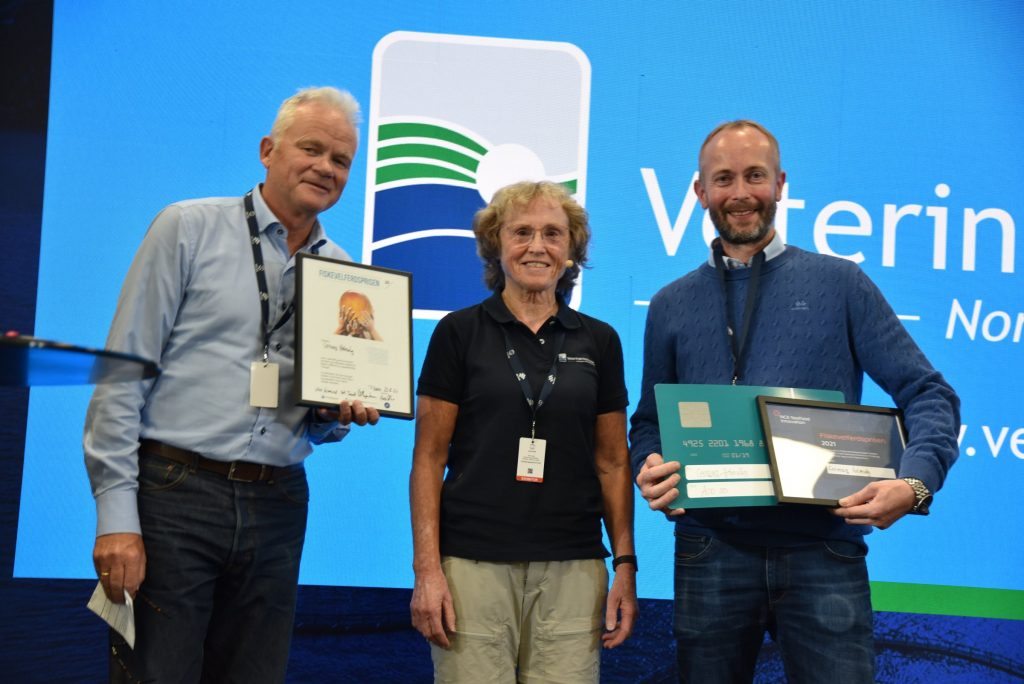At the Aqua Nor conference in Norway, Cermaq received the Fish Welfare Prize, recognizing its efforts to improve the quality and survival of its juvenile salmon.

Cermaq, one of the world’s largest seafood companies that farms salmon in Canada, Chile and Norway, recently won the Fish Welfare Prize at the Aqua Nor conference in Trondheim, Norway. A newly established award, the Fish Welfare Forum — a collaborative platform for the Norwegian Veterinary Institute and the Institute of Marine Research — bestowed the prize upon Cermaq to recognize its improvement work at the fry plant Holmvåg in Steigen, Norway.
“Good health and welfare for our fish is fundamental in all our work throughout our value chain across all companies in Cermaq,” said Knut Ellekjær, managing director of Cermaq Norway. “Good welfare gives a strong and robust fish, good production results and good financial results in the end.”
The company said that the commitment to fish welfare at the Holmvåg facility is “very high.” The facility specializes in the earliest stages of the salmon’s life cycle, developing innovative ideas to optimize fish welfare. From observing feeding behavior to adjusting the tank hydrodynamics, feed distribution and water temperature, staff have significantly improved survival and fry quality.
“By observing the fry’s behaviour closely, we have been able to act and make adjustments that have given very good results,” said Marit Mehus, fish health and freshwater manager in Cermaq Norway. “As a result of these changes, we now start with 5 percent fewer roe grains, but still produce the same amount of fry at the facility.”
https://www.aquaculturealliance.org/advocate/breeding-for-behavior-in-pursuit-of-a-better-cleaner-fish/
No new equipment or technological advances were used to make the changes. Indeed, Holmvåg is not a new facility, and the fish tanks are from the late 1980s. Rather, the company credits close follow-up and simple measures for boosting the quality and survival of the fry.
“These results show that we can make important steps for improved fish welfare in older facilities,” said Mehus. “What the staff at Holmvåg have done here is impressive and demonstrates how important their strong commitment to the fish is.”
Fish welfare is “on the agenda in all Cermaq’s operations,” with the company adopting various measures to optimize fish health and welfare. Most recently, it announced an agreement with Folla Alger, a Norwegian kelp farming start-up, to develop an integrated salmon and kelp farming system. Working together, the two companies will utilize nutrients from the salmon cages for farming kelp, as well as develop kelp into a new feed raw material for salmon.
“Integrated salmon and kelp farming enables us to both utilize nutrients around the farming cages as a resource, and that we get more alternative feed raw materials,” said Ellekjær. “It is good circular economy, and will help reduce the footprint from salmon farming.”
Follow the Advocate on Twitter @GAA_Advocate
Now that you've reached the end of the article ...
… please consider supporting GSA’s mission to advance responsible seafood practices through education, advocacy and third-party assurances. The Advocate aims to document the evolution of responsible seafood practices and share the expansive knowledge of our vast network of contributors.
By becoming a Global Seafood Alliance member, you’re ensuring that all of the pre-competitive work we do through member benefits, resources and events can continue. Individual membership costs just $50 a year.
Not a GSA member? Join us.
Author
-
Responsible Seafood Advocate
[103,114,111,46,100,111,111,102,97,101,115,108,97,98,111,108,103,64,114,111,116,105,100,101]



